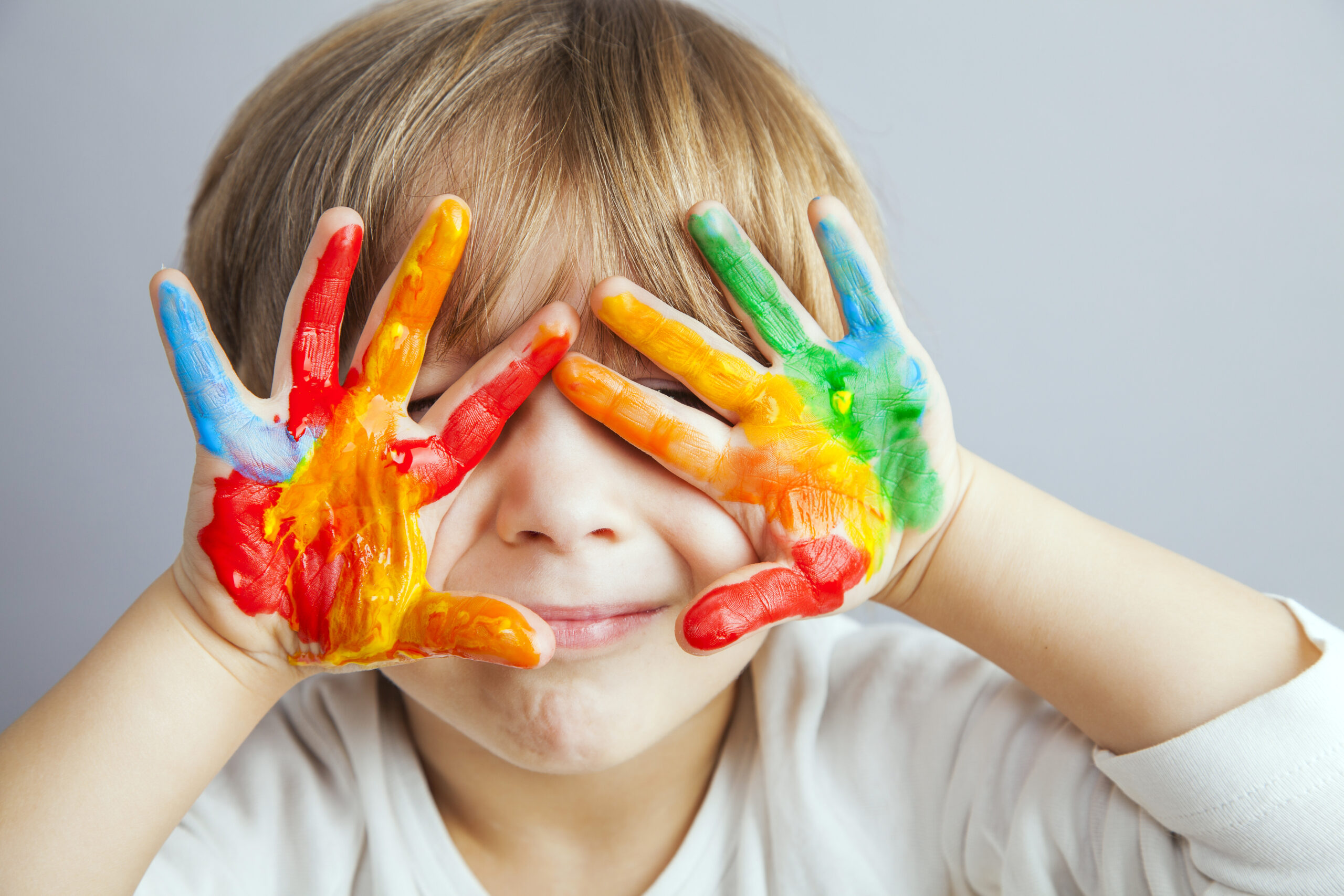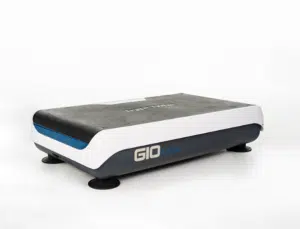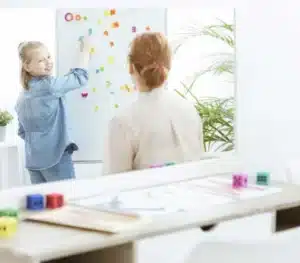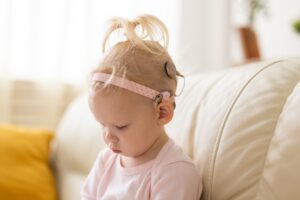By Erica Gliga MOT, OTR/L
With the weather getting warmer, you may be getting outside more with your little ones. Whether inside or outside, messy play is an important activity for your child’s development. This blog post provides a developmental and sensory processing perspective, specifically related to touch, on why messy play is encouraged. Check out the end of this blog for messy play inspiration.
What is messy play?
Messy play involves engaging and exploring different messy materials. Sand, paint, food, oh my!
Touch development
Q: What is the first sense that humans develop?
A: Touch.
Touch starts developing as early as 8 weeks old in utero. Touch is a “primary system for making contact with the outside world” and some consider it our “first language” (Lane & Bundy, p. 80). Touch is typically used to bond with a child and provide comfort. Touch impacts arousal, motor skills, emotional regulation, and the ability to engage in many activities. We have touch receptors all over our body which shows us just how important our sense of touch is.
As your little one grows from infant to toddler and so forth, they are constantly exploring their world through sensory experiences. In particular, sensorimotor play is integral for the first years of life. This involves learning and interacting with our environments by touching, hearing, smelling, tasting, and seeing all that is around us. Establishing this exploratory sensorimotor play is important to develop our sensory systems and support the developmental progression of play skills.
In addition to supporting play development, exposure to messy play and a variety of different textures can help support opportunities for touch sensory processing. It is essential to engage with our world in different ways using touch. One important part of touch sensory processing is the ability to appropriately respond to touch and the second important part of touch sensory processing is the ability to notice/recognize that we touched something.
Lastly, we cannot forget that messy play is fun, engaging, and fosters connection.
Messy play ideas
Note: While the following messy play ideas can be safe for a child to taste, please be cautious of any allergies or dietary sensitivities and supervise your child at all times.
Grab different utensils, kitchen gadgets to scoop/pour/dig, figurines, and small toys to use. Feel free to dip your toes in, too, and get messy with more than just your hands!
Homemade Foam
This homemade foam is made from the liquid found in garbanzo bean (chickpea) cans.
How to make:
Drain liquid from 1-2 cans into a bowl and add ⅛- ¼ teaspoon of cream of tartar respectively.
Use a hand mixer or a free-standing mixer to mix.
*Cream of tartar is not required but it will help the liquid mix.
*Your homemade foam will resemble whipped egg whites, with peaks in the foam when it is ready.
Make an ice cream shop in time for summer with an ice cream scooper, silicone cupcake liners, sprinkles, and measuring spoons.
Oobleck
Oobleck is a personal favorite because it is both a liquid and a solid and it is a unique texture that adults tend to love too.
How to make:
Mix 1 cup water with ¾ cups cornstarch; adjust with more water or cornstarch as needed (or to make more) in order to get the right consistency.
Add a few drops of food coloring or try gel food color so that your child can help squeeze it out. Your child might also be able to help you measure, pour, and mix it together.
Hide colorful gems in the oobleck for a treasure hunt.
Jello
Get giggly with Jello. Follow the simple instructions on a standard Jello box to create a bowl or baking dish of jello. You might think about what color/flavor can lend itself to added creativity such as blue jello for an ocean theme or orange jello for a volcano and dinosaur theme.
References:
Bundy, A. C., Lane, S., Mulligan, S., Reynolds, S., & Fisher, A. G. (2020). Sensory integration: Theory and practice. F.A. Davis.
O’Brien, J. C., Kuhaneck, H., & Ball, B. A. (2020). Case-Smith’s occupational therapy for children and adolescents. Elsevier.




